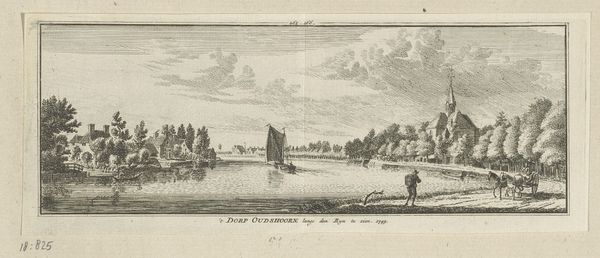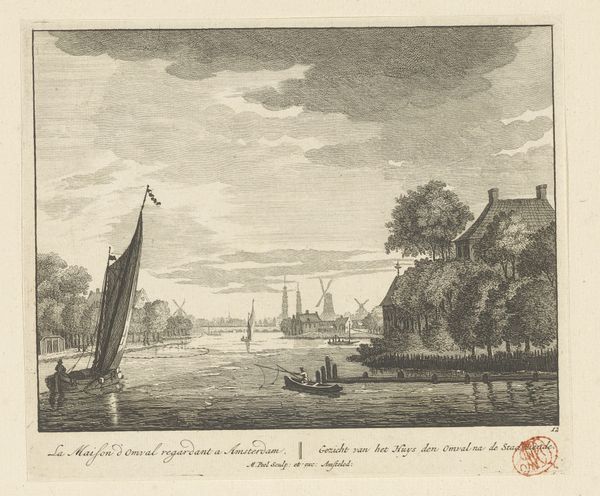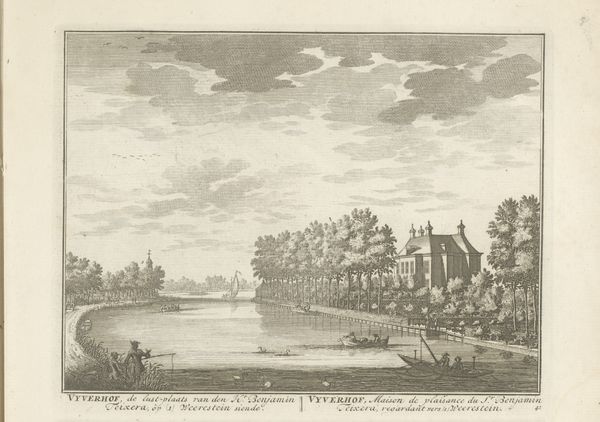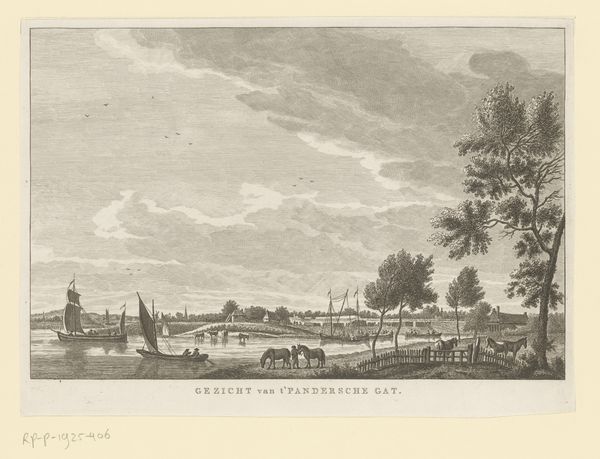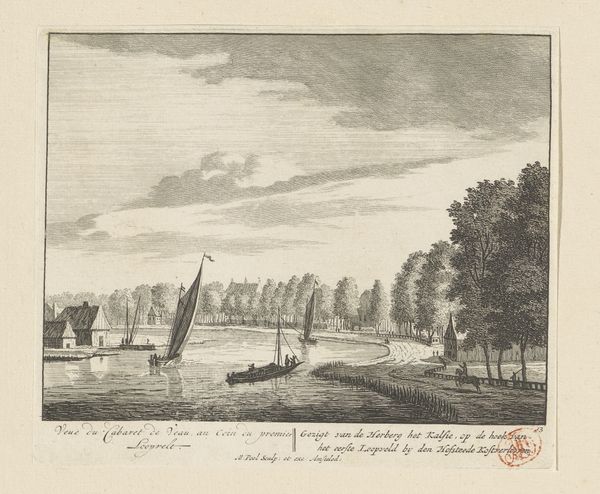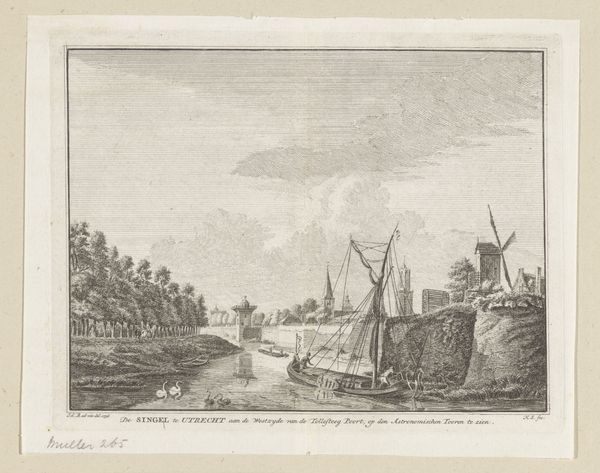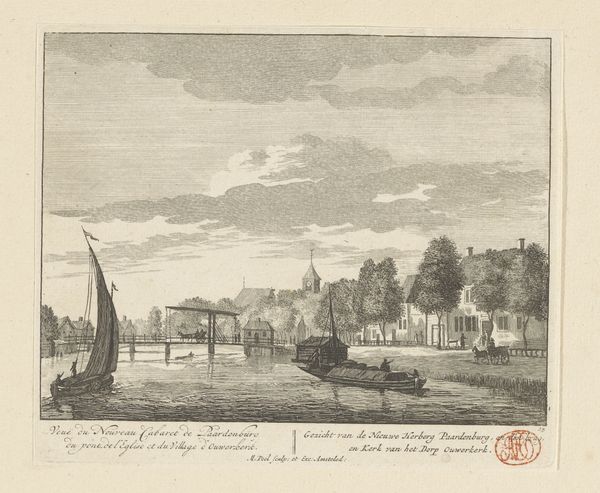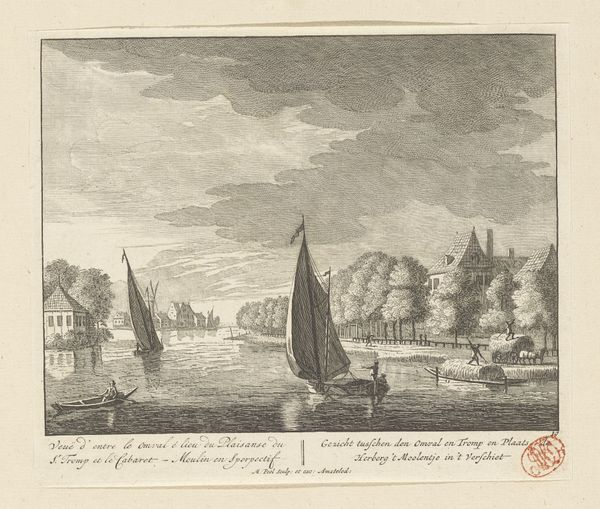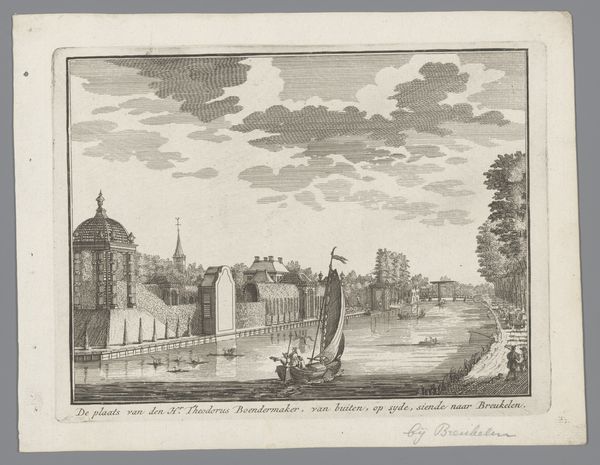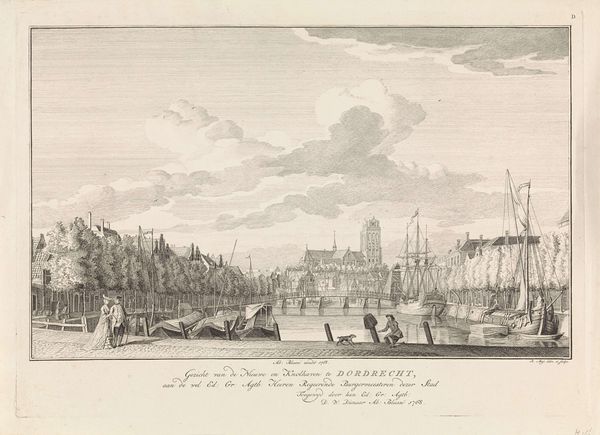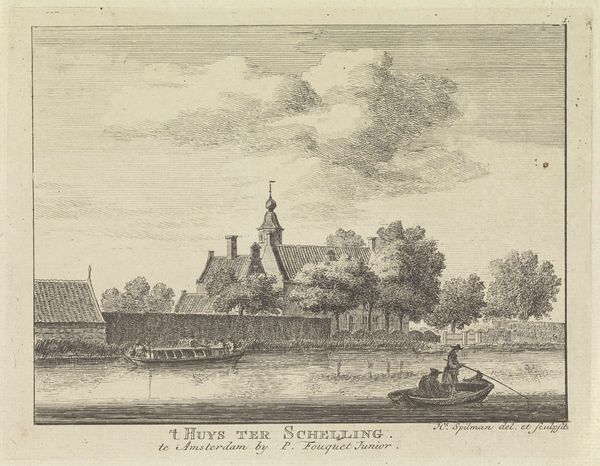
Dimensions: height 279 mm, width 472 mm
Copyright: Rijks Museum: Open Domain
Editor: This is "View of Leiden," a 1762 etching by Abraham Delfos, housed in the Rijksmuseum. There’s a gentle, pastoral feel, achieved, I think, by the soft light and the detail in the landscape. What do you see in this print? Curator: From a formal perspective, I am drawn to the spatial organization. Observe how Delfos creates depth through precise gradations of tone and carefully placed compositional elements. The foreground, dominated by the trees, gradually recedes into the distant cityscape via the careful use of line and perspective, and through variations in the marks used to produce the tonality. Note the density and intricacy in the foreground etching, which slowly dissipates into finer lines towards the background. Editor: So, the technique itself is building the layers and distance? Curator: Precisely. Consider also the subtle contrasts between the textures: the smoothness of the water against the rougher foliage, or the way the clouds are created with an economy of line, drawing the eye upwards. The light isn't merely descriptive. Rather it sculpts the forms and creates a certain visual rhythm. Does the scale influence your impression of the landscape depicted here? Editor: It’s interesting you mention the scale. It’s quite a wide view, but it feels intimate. The textures encourage you to look closely and not get overwhelmed by all the detail. Curator: Exactly, it establishes a dialogue between the immensity of space and the detail of the landscape, between graphic elements and semiotic content. Editor: I've definitely noticed so much more by thinking about how it was made and how the artist controls depth. Thanks. Curator: And I found your reflections regarding affect both novel and convincing. Thank you for prompting this illuminating discussion!
Comments
No comments
Be the first to comment and join the conversation on the ultimate creative platform.
